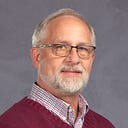Forgotten Monmouth chemistry professor left scientific legacy
MONMOUTH, Ill — Monmouth College’s chemistry department is the stuff of legend, thanks largely to three legendary chemistry professors who helped elevate its reputation to national status.
William S. Haldeman, who taught from 1918 until 1952, established a revolving loan program that allowed 88 of his 343 chemistry graduates to successfully obtain their Ph.D. His successor, Garrett Thiessen, who taught from 1930 until 1967, was named by the Manufacturing Chemists Association one of the nation’s six outstanding teachers of undergraduate chemistry. Richard “Doc” Kieft, who taught from 1976 until 2006, left his estate of $2.3 million to the chemistry department, establishing a prestigious eight-week summer research program.
Yet despite the service of these memorable faculty, one equally accomplished Monmouth chemistry professor is today largely forgotten. John Nesbit Swan, who was named Pressly Professor of Chemistry and Physics in 1893, left an indelible mark not only on the sciences at Monmouth College, but also the sciences in America.
Born in New Jefferson, Ohio, in 1862, Swan received his bachelor’s and master’s degree from Westminster College and his Ph.D. from Johns Hopkins University. Before coming to Monmouth, he taught at Burlington, Iowa; Tarkio College and Westminster College.
Swan’s inquisitive mind caused him to always be on the forefront of technology. Fascinated by wet-plate photography, he became an accomplished and prolific amateur photographer, producing dozens of high-quality views of Monmouth and Monmouth College in the 1890s, which became the basis of a lecture program that he presented as far away as New York.
Less than two years after the discovery of the X-ray by Wilhem Röntgen in 1895, Swan managed to acquire the apparatus necessary to duplicate Röntgen’s experiments for $300. The photo published today, taken with Swan’s own camera, shows him making an X-ray image of the arm of his 8-year-old son, Stewart Duffield Swan. The child’s arm is resting on a photographic plate. A Crooke’s tube is suspended above the arm on a ring stand. It receives high voltage form the induction coil on the table, powered by a low-voltage DC battery on the floor. The pyramid-shaped box on the table is a fluoroscope, which could be held up to the eyes to view an X-ray image in real time.
This photograph was taken in the chemistry lab of Monmouth College’s Old Main, which burned in 1907. When it became apparent that a new science building would be critical to Monmouth’s survival, Swan rose to the task. He visited numerous modern laboratories on the east coast during the spring of 1908 and took notes to guide the New York architects who designed McMichael Science Hall. The result was a building so well arranged that it served the college for 60 years with very few changes.
After the resignation of interim Monmouth president J.H. McMillan in 1902, Swan and social science professor Russell Graham served as co-interim presidents for the following year. He was also very active in the Monmouth community, serving as chairman of the Warren County School Directors’ Association and was an advocate for establishing township high schools.
Swan’s academic reputation soon began to draw interest of other institutions. In 1899, he had been prominently mentioned as a candidate for the president of the University of Iowa. In 1912, the State University of Mississippi (Ole Miss) was seeking a one-year replacement for the head of its chemistry department and contacted Swan, who received permission from the Monmouth board of trustees for a leave of absence. Three years later, that sabbatical led to Swan resigning his Monmouth position to become permanent chair of Ole Miss’s chemistry department, a post he would hold until a heart attack claimed his life at age 74 in 1937.
But Swan’s legacy lived on. The author of a book for adolescents in which he discussed the proper way to live mentally, socially and spiritually, Swan had raised three boys who diligently followed in his footsteps.
All three of Swan’s sons became noted chemists and often attended the annual meeting of the American Chemical Society as a family.
Stewart Duffield Swan, who is pictured having his arm X-rayed, attended Monmouth College, Johns Hopkins University and Columbia University, and received his doctorate from the University of Chicago in 1922. A veteran of World War I, he served in France with the Army’s Gas Regiment. He served as director of research and development for the Dental Supply Co. of York, Pennsylvania, for more than 30 years and was a 50-year member of the American Chemical Society. He died in Connecticut in 1976.
William Orr Swan served as head of the chemistry departments of Virginia Military Institute, Louisiana College and the University of Chattanooga. He died in Chattanooga in 1970.
Thomas H. Swan was a research chemist for the Mellon Institute of Pittsburgh and was on loan to the Cluett Peabody Co., of Troy, New York, maker of Arrow shirts, between 1934 and 1941, when he and another scientist invented the permanently shaped shirt collar. He later worked for the U.S. Department of Agriculture and died in Rochester in 1971.
Jeff Rankin is an editor and historian for Monmouth College. He has been researching, writing and speaking about western Illinois history for more than 35 years.
